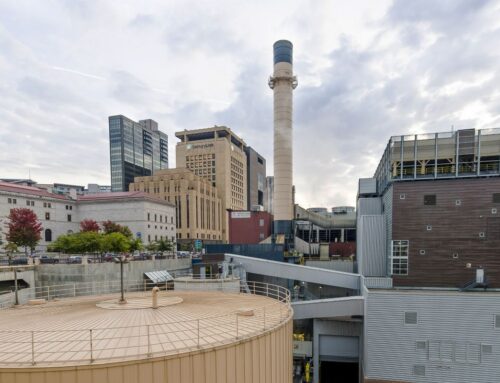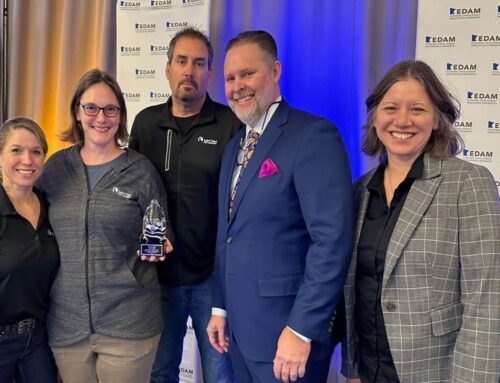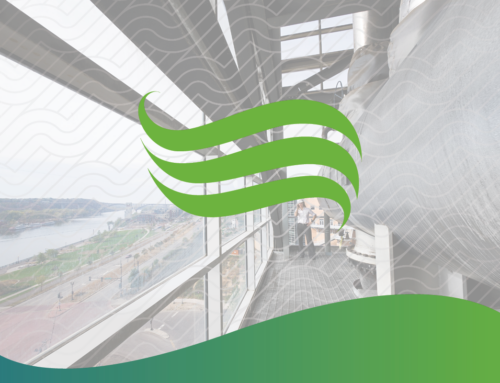Frequently Asked Questions
August 6, 2020 by Ever-Green Energy
Why were older district energy systems designed with steam?
Early district systems relied on high combustion energy sources that generated steam for heat or electricity, where the heat could be removed as steam that could be sent through a pipe for buildings to use. Using steam did not require a pump, which had advantages to system’s 140 years ago.
What is district energy?
District energy systems produce hot water, steam, or chilled water at a central plant or satellite plants and then distributed the energy through a network of underground pipes to connected buildings. At the building’s mechanical interface, energy is transferred through a heat exchanger to the building’s internal water or HVAC loop. HVAC refers to the heating and air conditioning equipment that disperses and manages conditioned space in a building. In a hot water system, once a building takes the energy it requires, the water is returned to the central plant to be heated or cooled to the desired supply temperature and then recirculated through the closed-loop network.
How does a hot water system work?
- Inside the main Oberlin plant are a series of boilers. Hot water is produced by combusting fuels in these boilers (predominantly gas or coal, with future potential for biomass/biofuel).
- The water is distributed to buildings through a system of underground pipes. This piping loop supplies hot water to buildings and brings cooler water back to the plant to reheat.
- Once the water reaches the building, it runs through the building heating system to heat the internal spaces.
- To heat building spaces, hot water is circulated through the building pipes and out to radiators or fan coils that can warm air in rooms and hallways. Additional radiators and coils in air handling units will be installed as part of the project to accommodate the lower water supply temperatures.
- The thermal energy (via hot water from our system) can be used to heat water for showers, washing hands, or cooking. This is called domestic hot water usage. A heat exchanger will be used to separate the district hot water system from the domestic hot water system.
Why is Oberlin College converting the system?
How will this make the Oberlin energy system more efficient?
The new closed-loop hot water system will greatly reduce the temperature of the water used to heat buildings along Superior Street. Additionally, energy in a loop can return to the plant in a cycle to get reheated and sent back out to customers. This saves energy and water!
How will this improve Oberlin’s commitment to the environment?
- Increase efficiency = less energy, less water
- Reduces greenhouse gas emissions
- Positions the system to integrate renewable energy, such as biomass (wood chips or renewable fuel oil sourced from biomass or agricultural crops)
What are the other benefits to the campus?
- Establish a national model for carbon-neutral energy solutions serving a college campus.
- Educate and assist the campus and community on opportunities for behavioral changes that can lead to greater energy and water conservation, waste reduction, and more efficient energy systems.
What will be the construction impacts on campus?
What is more efficient about hot water systems?
Closed-loop hot water systems can operate at a much lower temperature than the existing steam system. The lower the temperature of the heating medium, the lower the heat losses. This is due to the temperature difference between the heating medium and the surrounding air temperature and the rate at which the heating medium cools. The greater the difference, the faster the heating medium will give up heat, which is energy.
In a closed loop hot water system, the hot water from Duluth Energy Systems heats water in your building in an energy transfer station. The hot water that will flow through offices or living spaces in your building is separate from the hot water in the hot water loop. Any heat that is not absorbed by your buildings hot water energy transfer system to heat your building is returned to the plant to be reheated and pumped back into the hot water loop. The recycling of this water results in water savings. In an open loop steam system, no water or steam is returned to the plant, it is all wasted to the storm or sanitary sewer.
How will this system serve the community?
How can this project create and promote equitable outcomes for the community?
What other environmental efforts have been made on campus?
- Oberlin Municipal Light and Power Systems (OMLPS) is the electricity provider to the college and provides the campus with 86% renewable energy through renewable energy credits.
- The transition of the central heating plant from coal to natural gas in 2015 and the OMLPS renewable portfolio reduced the carbon footprint of the campus by 65% below the 2008-2009 baseline.
- The Environmental Dashboard is part of an important effort to educate and lead to more sustainable behavior on campus. Tying the use of heating and cooling to the dashboard is an important part of next steps for these efforts.
- A long history of campus leadership has led to globally-recognized environmental showcases, most notable they Living Machine within the Adam Joseph Lewis Center for Environmental Studies (constructed in 2000).




